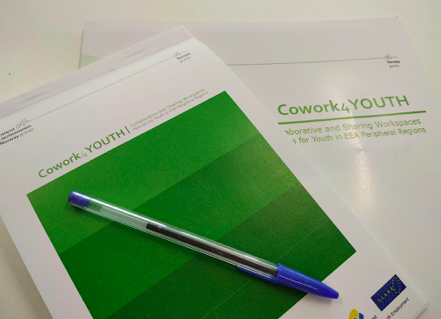The rapid pace of technological advancement is causing dramatic changes in the tasks undertaken in production processes. Adapting to these changes proves essential, particularly for the youth, who are the future of work. Even if the current youth are more educated than ever, the mismatch between the skills demanded by companies and those supplied by the workforce is worrisome. This mismatch may arise from several sources and affects population cohorts differently. For instance, older workers are more prone to suffering from skill obsolescence, as their physical and mental skills might be limited as they age. New entrants in the labour market and, often, young cohorts overall often experience other types of skill mismatch, such as overeducation (Cedefop, 2010). According to the European Labour Force Survey, Spain’s overqualification rate (the share of overqualified individuals over the employed population aged 20-64) stands at nearly 36%, followed by Greece (32.4%), Cyprus (31.8%) and Ireland (28.5%).
The phenomenon of skills mismatch contributes to imbalances in labour markets and partly explains the striking numbers of structural youth unemployment in many European regions. Besides the negative consequences that skills mismatch entails for companies and countries (losses of productivity, innovation and competitiveness), it also affects the youth in two key ways. For the employed population, overqualification prevents the youth from fulfilling their potential, generally entailing lower wages and lower job and life satisfaction (ILO, 2020). Previous research shows that the overqualified youth is willing to accept job offers that do not align with their preparation in order to avoid becoming or remaining unemployed. (Berlingieri & Ersiek, 2012). For the non-employed youth, skills mismatch is precisely one of the reasons that explains the fact that part of the potential workforce is unable to find a job.
Skills shortages related to overeducation signal a poor connection between training supply and labour demand. From a policy perspective, a relevant measure to tackle skills mismatch relates to ensuring a smooth transition between the educational and labour stages. The development of some training within the company can work as a way to reduce the distance between the training provided and the labour market (ISEAK, 2023). As a response to the existing skill gaps, different figures have been designed through which part of the training can be developed within the companies. This collaboration between companies and training centers may serve to complement the knowledge and skills acquired in formal training with those required by companies. Some of these examples are dual training or training contracts. More broadly, international experience shows that it is important to find a balance between a more general academic training and specific training in companies.
For the aforementioned transition between the educational and labour stages to materalise, it is paramount to tackle school failure and early school dropout. An alternative to early school dropouts is the promotion of intermediate vocational training that warrants the labour specialisation of the youth of all strands of educational levels (ISEAK, 2023). One course of action involves an increase in the supply of the intermediate vocational training that is most in demand, prioritizing those specialties with a greater and better labor market fit. Once the training offers that lead (causally) to higher insertion rates and access to quality employment have been identified, it is essential that sufficient places are offered so that all those who wish to train in these specializations can do so. In order to serve as a lever for the insertion of young people (and the reinsertion of unemployed adults), intermediate vocational training programs will have to adapt their programs and curricula as technological advances develop with the aim of offering training in the new competences that are progressively demanded.
On the other hand, research shows that individuals with higher levels of education are generally better prepared to adapt to technological change (ISEAK, 2023). In this regard, it is important to analyse whether the contents taught in both vocational training and university degrees are in line with technological development. Although formal higher education cannot fully respond to the needs of the labor market at any given moment, it is nevertheless true that certain trends seem to be structural. For example, the need to acquire digital skills cuts across all areas of education. At the same time, it is important to foster skills that are complementary to technology–and which for now are limited only to individuals–such as those related to teamwork, management and planning or creativity (Gorjón et al., 2022).
Last but not least, to tackle skills mismatch effectively, it is important that policy actions be supported by well-founded research, which is still relatively scarce. While it is natural that temporary labour market imbalances exist, it is paramount to address persistent skill mismatches, or those that become entrenched, as they lead to real socioeconomic losses, leaving the youth particularly exposed.
References
Berlingieri, F., & Erdsiek, D. How Relevant is Job Mismatch for German
Graduates? ZEW Discussion Paper No. 12-075. Available at: https://ftp.zew.de/pub/zew-docs/dp/dp12075.pdf?_gl=1*1inioa1*_ga*MTYzMjczMjU2NS4xNjk3MDE0NDMw*_ga_KFD4G5CY27*MTY5NzAxNDQyOS4xLjAuMTY5NzAxNDQyOS4wLjAuMA.
Cedefop (2010). Skill mismatch in Europe. Available at: https://www.cedefop.europa.eu/files/9023_en.pdf
Gorjón, L., de la Rica, S., & Vega, A. Empleos y competencias del futuro en España. Available at: https://iseak.eu/publicacion/empleos-y-competencias-del-futuro-en-espana
ILO (2020). What is skills mismatch and why should we care? Available at: ilo.org/caribbean/newsroom/WCMS_853615/lang–en/index.htm
ISEAK (2023). White Paper on employment in the Basque Country. Available at: https://iseak.eu/wp-content/uploads/2023/02/ing-lb-empleo-euskadi-digital-2023-02-15.pdf
Stay connected with us through our social media:
Facebook, Twitter, LinkedIn: @Cowork4YOUTH, and visit our website https://www.cowork4youth.org/


